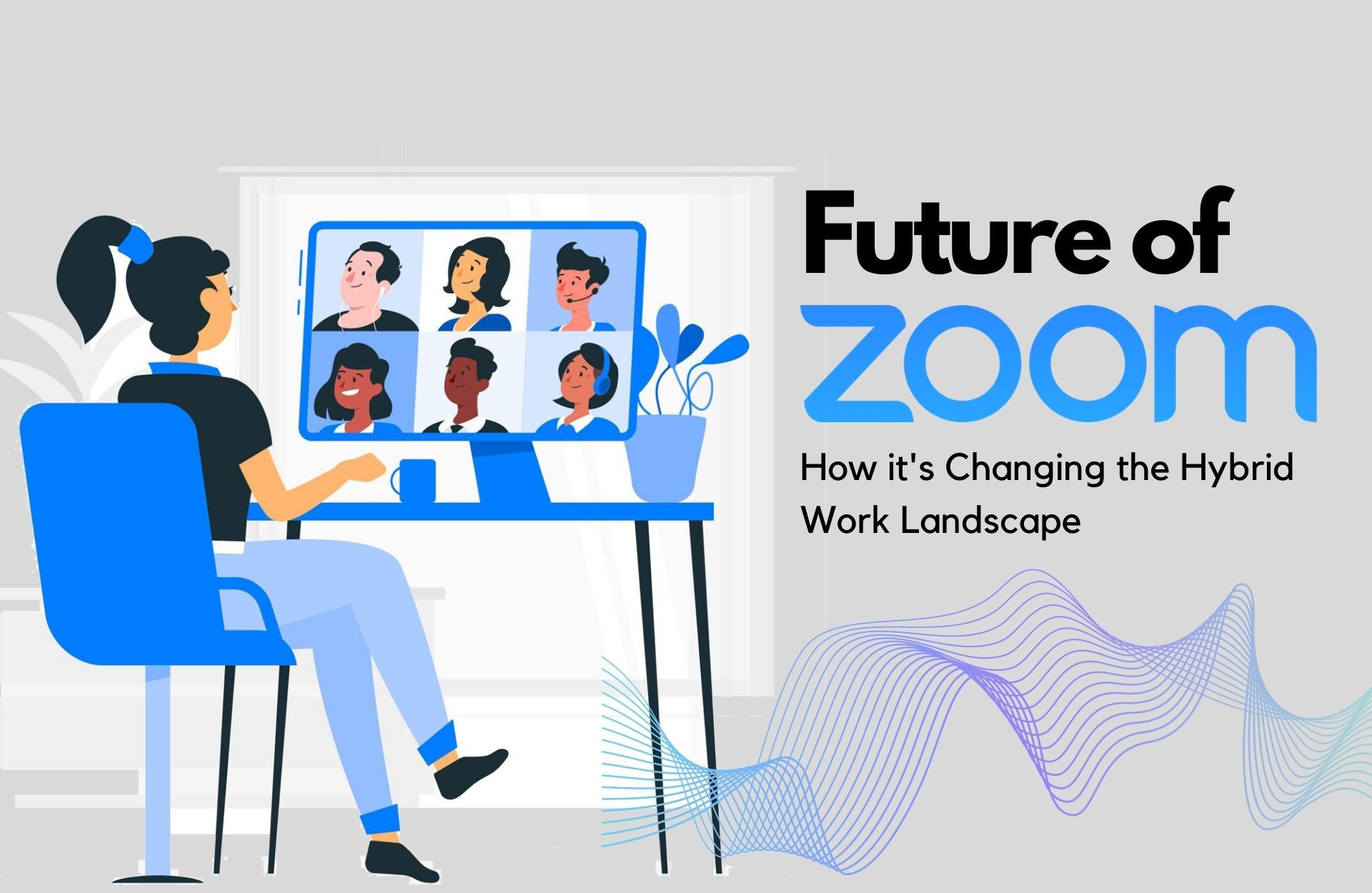The office landscape is undergoing a major overhaul, and it’s all thanks to the concept of hybrid work. It’s the perfect storm of technology advancements and employees seeking flexibility, allowing for a mix of remote and in-person work. It’s the best of both worlds – all the perks of telecommuting, but none of the loneliness. This new work model is shaking things up, and in this article, we’ll be taking a deep dive into the changing world of work and what companies and employees alike can do to make the most of this hybrid revolution.
Overview of Hybrid Work Models
Hybrid work models are the new black in the corporate world, as companies try to have their cake and eat it too – boost employee happiness and output while also cutting costs. Picture a blending of working from home and being chained to a desk, providing employees with the illusion of freedom in their work location and schedule.
There are a few different types of hybrid work models, including:
- Part-time remote: Employees work sometimes in the office and sometimes remotely
- Flexible schedule: Employees can choose their own schedule as long as they meet specific requirements or goals
- Office-Based Remote Options: Employees will primarily work in the office but may choose to work remotely on certain days or on certain projects.
You may also be interested in: What is Hybrid Work Model?
Impact of Hybrid Work Models on workplace
As the world navigates the tumultuous waters of the COVID-19 pandemic, hybrid models have become the new normal, offering a convenient and cost-effective solution for companies and employees alike. They’re a perfect example of how to take lemons and make lemonade, turning a difficult situation into a positive outcome. So let’s dive into the world of hybrid work and see how it’s changing the game, one workday at a time.
Impact on Employee Productivity
The impact on employee productivity is like a tightrope walk – balancing the benefits and drawbacks of hybrid work patterns. On one hand, employees who have the freedom to work from the comfort of their own homes, or have the flexibility to set their own schedules, may feel like they have the world at their feet. They can focus on their work without the distractions and interruptions of a traditional office environment, and potentially lead to a happier and more productive workforce.
However, this remote utopia can quickly turn into a dystopian reality. Isolation and disconnection can creep in, causing employees to feel like they are lost at sea. This can negatively impact engagement and productivity, leading to a decline in output and performance.
To ensure employees are able to walk the tightrope of productivity, employers must provide a safety net. This means establishing clear communication channels and protocols, regular check-ins, and feedback to provide guidance and support. Employers must also ensure employees have access to the tools and resources they need to be successful. After all, it’s the employer’s responsibility to prepare employees for the challenge of balancing the productivity tightrope.
Useful research data: Does Hybrid Work Increase Productivity?
Impact on Employee Engagement
Hybrid work models are like a double-edged sword in the world of employee engagement. On one hand, they can offer the gift of flexibility that can lead to greater job satisfaction and a higher level of engagement. Think of it as a happy worker is a productive worker.
However, the flip side of this coin is that remote work can lead to feelings of isolation and disconnection from the team. This can result in a dip in engagement levels, like a sinking ship in a sea of mediocrity.
It’s important for employers to navigate this complex landscape by ensuring their hybrid employees are connected and supported, like a captain steering a ship through a storm. This can be achieved through regular check-ins, virtual team-building events and other initiatives that foster a sense of community, like building a bridge between remote workers and the rest of the team.
Find out: How to Lead and Motivate a Remote Team
Impact on Communication and Collaboration
Hybrid work models can have a dual personality when it comes to communication and collaboration in the workplace. On one hand, it can be like a game of telephone with employees bouncing back and forth between working remotely and in the office, causing messages to get lost in translation. On the other hand, managers may find it like trying to herd cats, trying to keep remote workers engaged and informed. Meanwhile, office-bound employees may feel like they’re on an island, disconnected from their remote colleagues.
Bringing everyone together and on the same page is like trying to herd kittens with a feather. Coordinating meetings and projects with team members scattered all over the place is like trying to wrangle a herd of wild horses.
To tackle these challenges head-on, employers may need to put their money where their mouth is, investing in cutting-edge communication and collaboration tools, like video conferencing and virtual team-building activities. They’ll also need to create a roadmap for clear communication protocols and guidelines for remote workers, and provide training on how to effectively collaborate in a hybrid environment – because let’s be real, working together while apart isn’t as easy as pie.
Explore: Top 8 Remote Collaboration Tools for Teams
Impact on Workplace Culture
Workplace culture is like the glue that binds a team together, shaping their interactions and attitudes towards work. But, with the introduction of hybrid work models, the culture can become more like a jigsaw puzzle, where remote and office workers fit together in different ways.
The flexibility and autonomy that hybrid work models offer can be a double-edged sword. On one hand, employees feel like they have more control over their schedules and work environment, leading to higher job satisfaction and motivation. On the other hand, remote workers can feel like they’re on an island, disconnected from their coworkers and the team’s culture. This can be a real downer, causing a drop in engagement and sense of belonging. Maintaining a cohesive team culture in a hybrid work environment is like trying to herd cats, it requires effort and creativity.
Detailed article: The impact of remote work on company culture
Impact on Talent Acquisition and Retention
A talent acquisition and retention tango is one of the impacts that hybrid working models have on the workplace. Companies that embrace the flexibility of a hybrid work model, like a ballroom dancer, may have an edge in attracting top talent, who are searching for a work-life balance that allows them to conveniently move between office and home.
With hybrid work models, employees can tango with their schedules, feeling in control and more satisfied with their jobs, leading to reduced turnover. But for some companies, the lack of face-to-face interaction may cause a few stumbles in attracting and retaining talent, as building relationships and fostering a sense of community can be more challenging.
The hiring process also gets a twist with hybrid work models. Companies may need to switch up their recruiting strategies, like changing partners mid-dance, to attract remote workers and ensure their onboarding process runs as smoothly as a well-choreographed dance. They may also need to invest in technology to facilitate remote interviewing and onboarding, like a new set of dance shoes.
Conclusion
In conclusion, hybrid working models bring both sweetness and sourness to the workplace. On one hand, the flexibility to work from anywhere, better work-life balance, and a more diverse workforce can be a real game-changer. On the other hand, maintaining company culture, employee engagement, data security, and compliance, and preventing employee burnout and isolation are like hurdles that need to be taken seriously. Employers must take a tailored approach, considering the unique needs and preferences of each employee, in order to effectively implement hybrid work models and ensure the success of their remote teams. It’s like having the right ingredients for a winning recipe, and employers must ensure to mix and match it just right!

